stormy weather

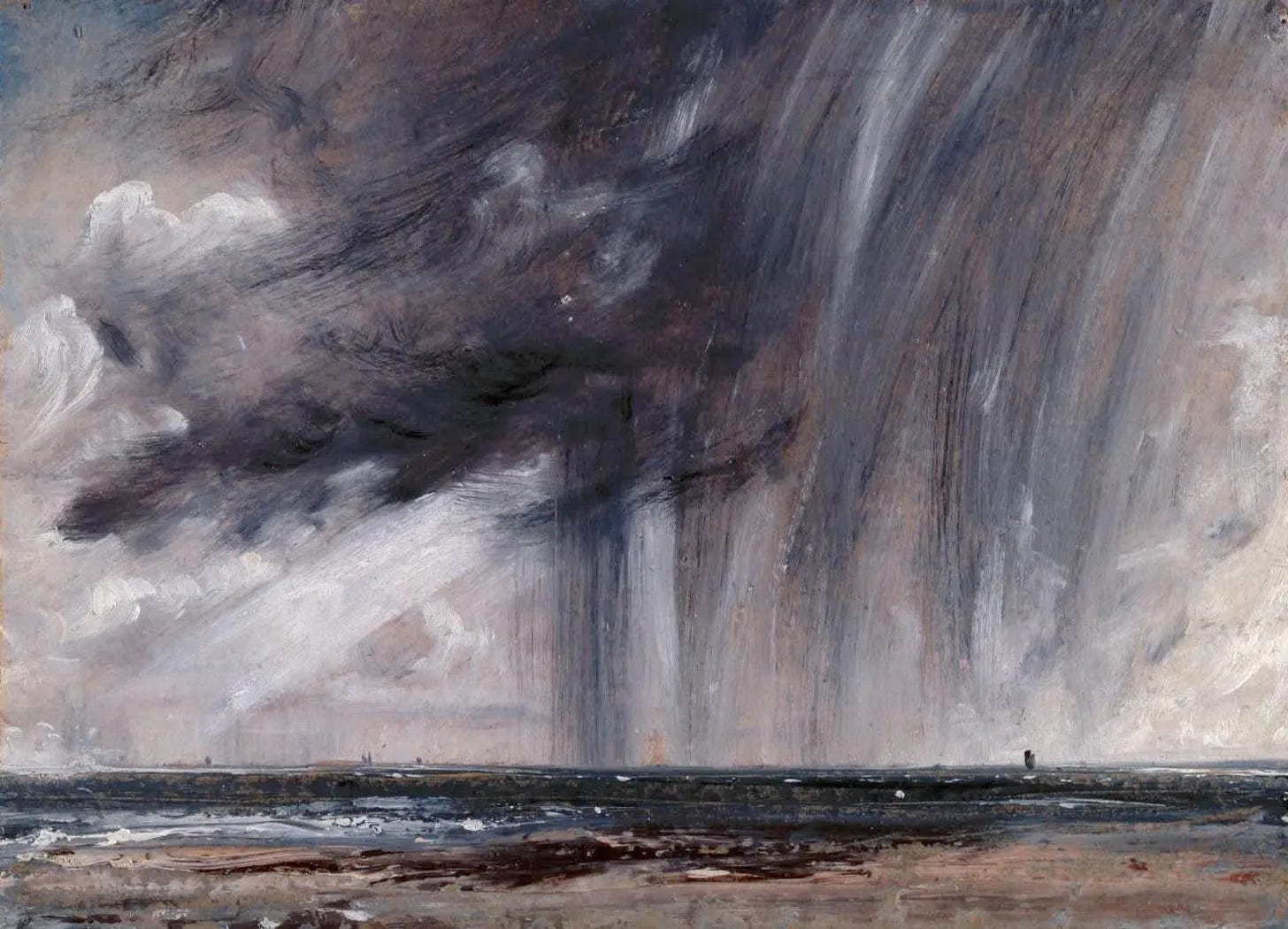
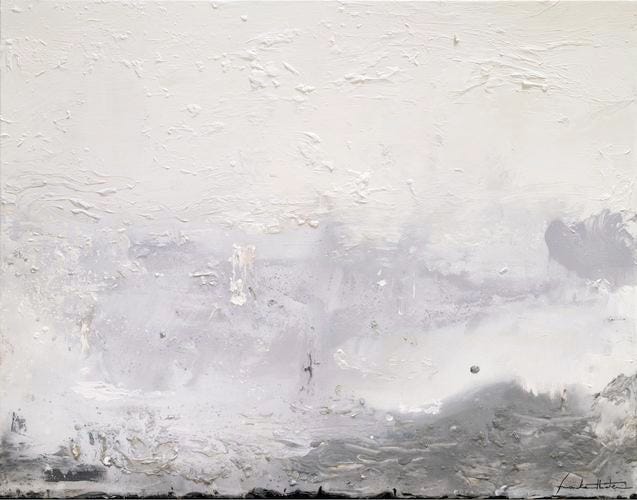
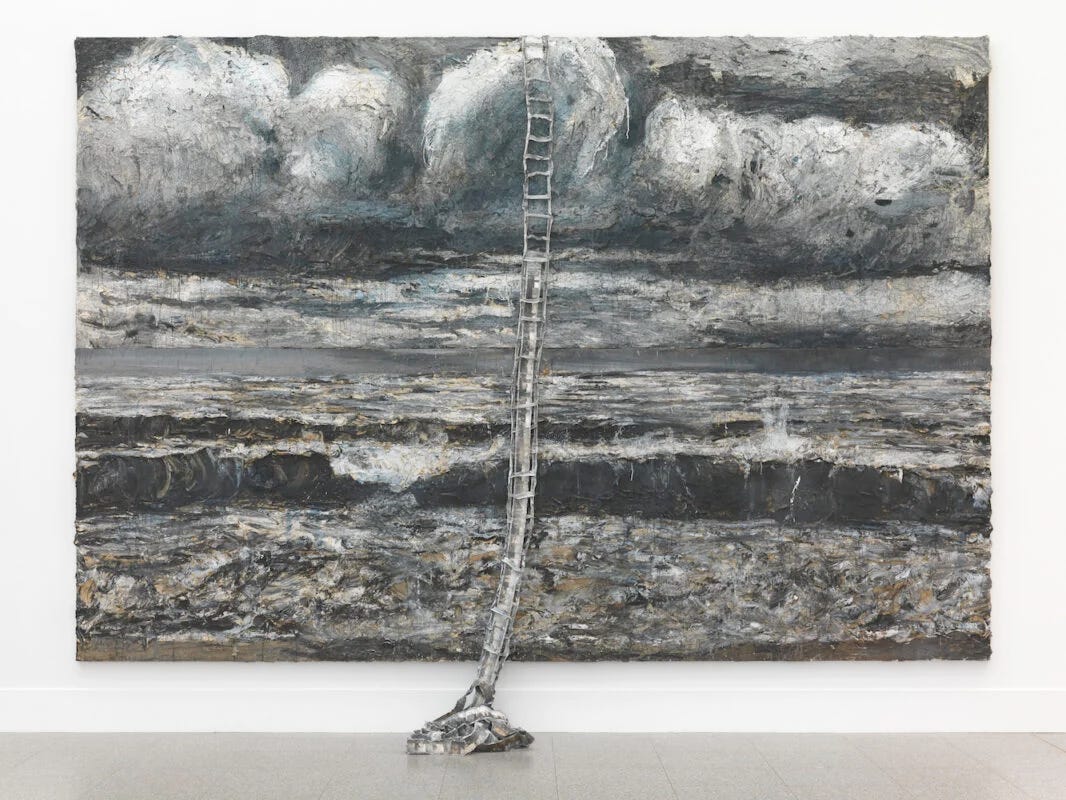
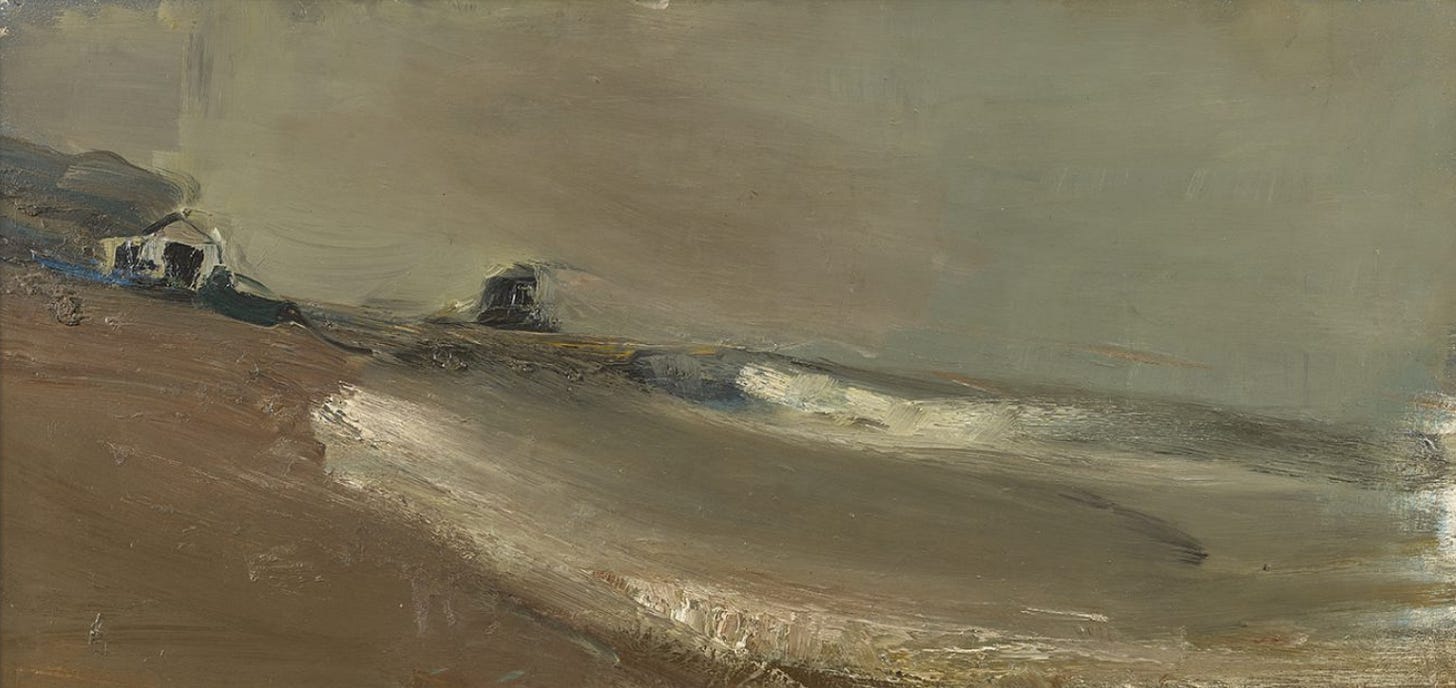
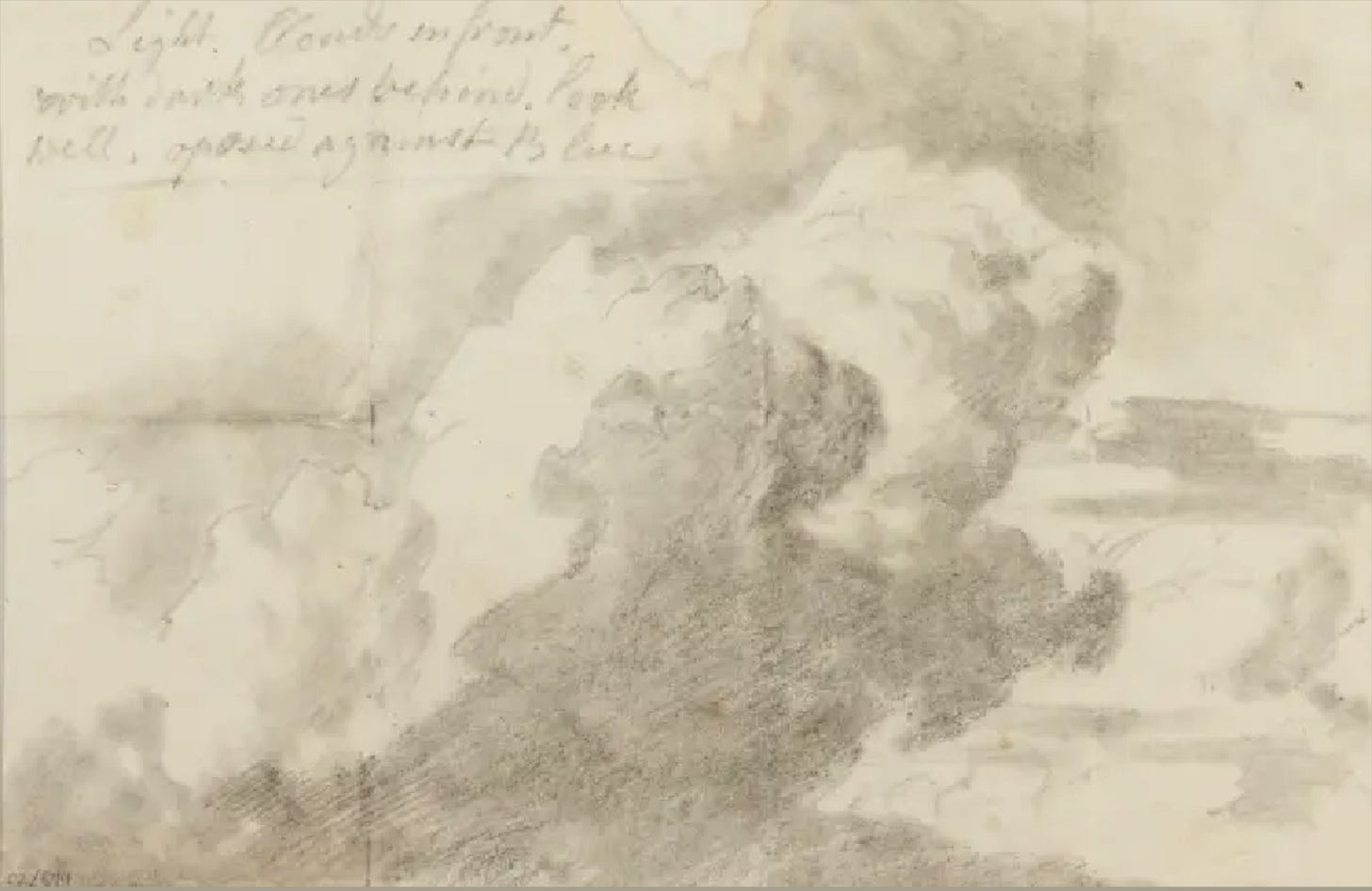
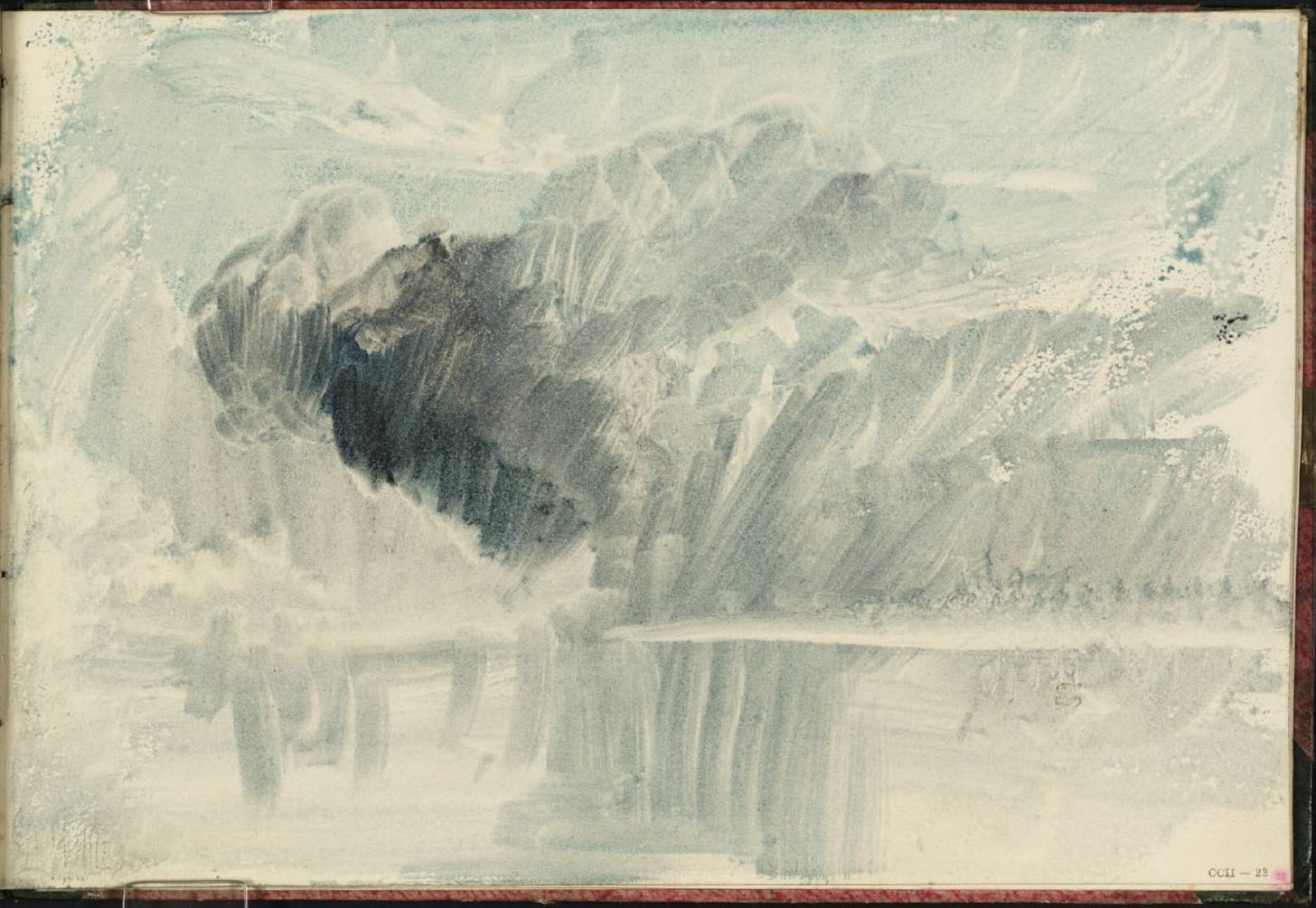
Well, the sky is much bigger than we are. We occupy a thin mineral surface on an iron planet which weather sweeps across, disinterested in our little lives. However, we are very interested in it. That weather has a malevolent intent, especially in the winter, is a pathetic fallacy. As artists make clear, weather, registered by clouds, is simply ever-changing and ever beautiful.
Helen Frankenthaler’s 1992 painting Barometer, above, is just what the sky is: a barometer as accurate as my 1930s Taylor’s Stormguide which always gives me notice a day or two before of what is coming my way. There is a facebook group, the Cloud Appreciation Society, which posts amazing displays in the sky; cloud-spotters name all the effects and their causes; one tires a bit of the spectacular nature of the photographs, all drama and vivid colour taken with cellphone cameras. They never post a dark, dour, unremittingly leaden sky which means we are stuck in some sort of low.
Anselm Kiefer’s 2008 painting, Am Anfang, looks to be literally painted with lead. According to Mark Durden’s review of an exhibition of Keifer’s use of photographs, they are surfaces which he paints over, corrodes and contaminates, attaches to lead sheet by electrolysis. Keifer is dark, engaged in a life long excavation of German fascism where the surface of the earth is as scored and torn as the surface of his photographs. Iconography is complex and personal: how can any of this desperate melancholy be healed? Durden points out Keifer’s ‘de-innocenting of romantic landscape tradition’.
Constable, Turner, Reinagle, deeply embedded each in their own ways in the romantic landscape traditon, filled notebooks with cloud studies, sketches done so quickly that there isn’t time to attach questions of meaning and import to them. Their much more worked-over paintings that included sky conditions, whether clouds or pollution, also include small scale figures, buildings, things on that thin surface of the earth and of history, forcing themselves back into importance.
Tacita Dean writes indistinctly over her chalk cloud drawings. Sunset has a line from Lord of the Flies: ‘fading knowledge of the world’, fading because of the fragility of chalk itself. The chalk is a synecdoche of the thought. The cloud and the chalk are, correctly, fleeting.
And Andy Goldsworthy, Joan Eardley and Kate Downie? Theirs are Scottish skies.



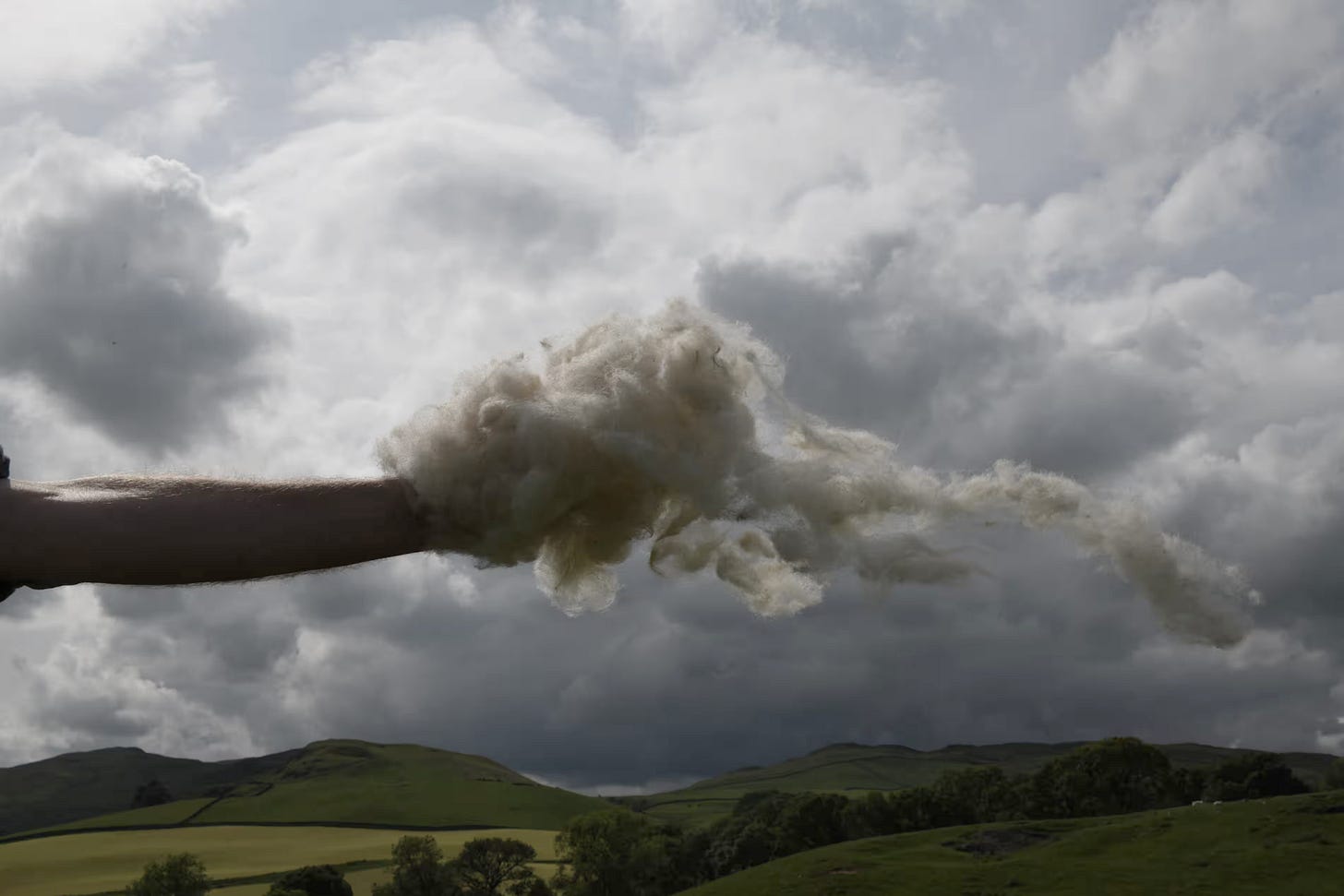
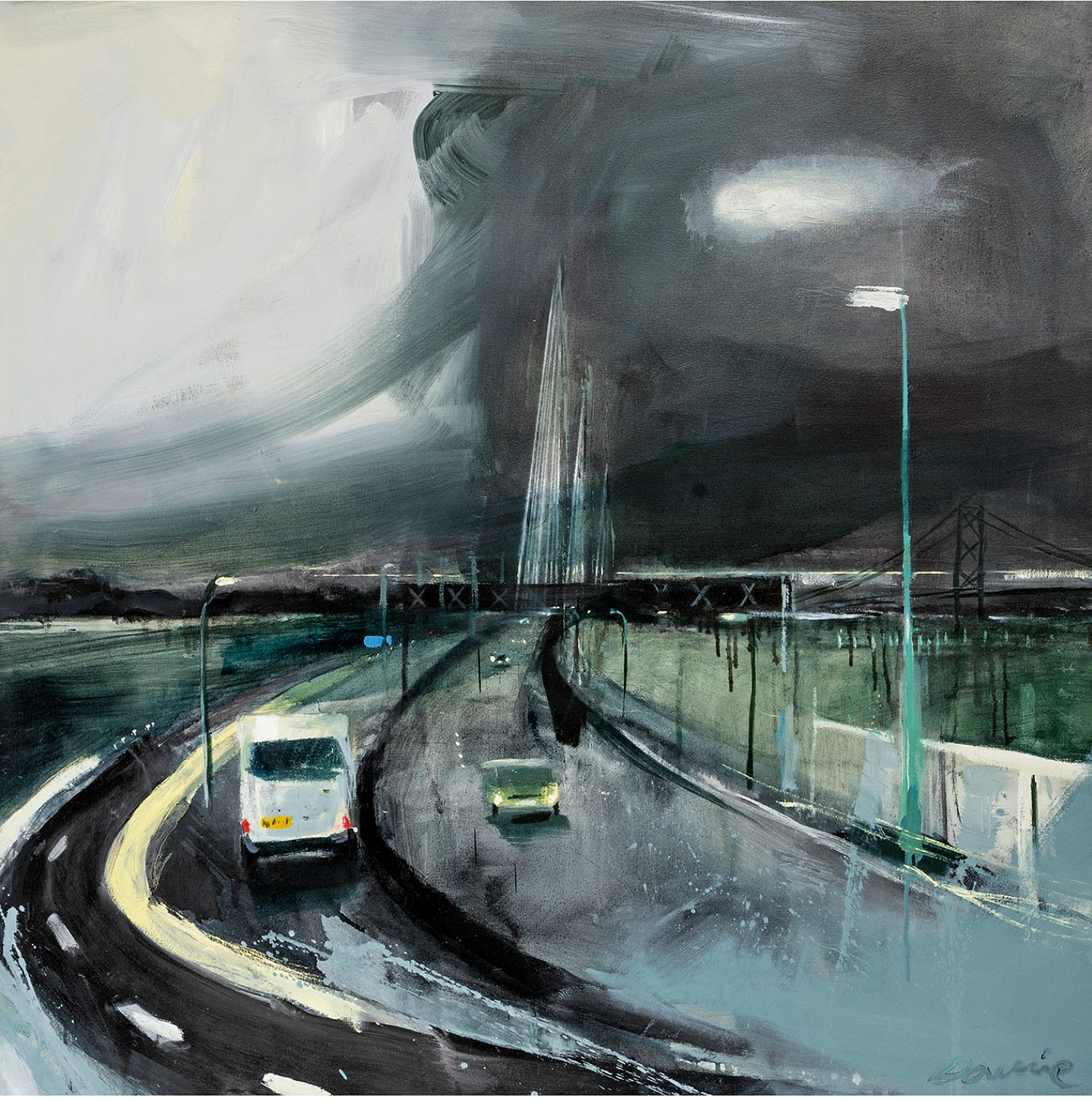
I agree that these images are beautiful and provocative. I'm thinking of Joni Mitchell's "I've looked at clouds from both sides now..." having seen her last year at the Grammy's. A great Canadian moment.
FanTAStic Images. A great surprise, the first image, and then onward.